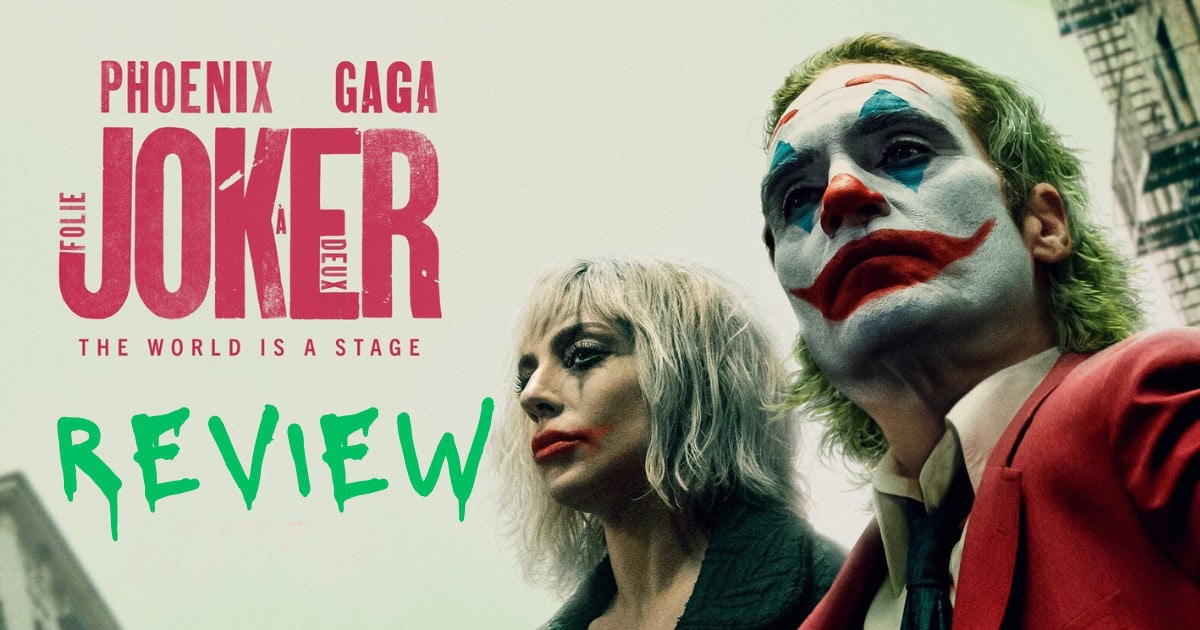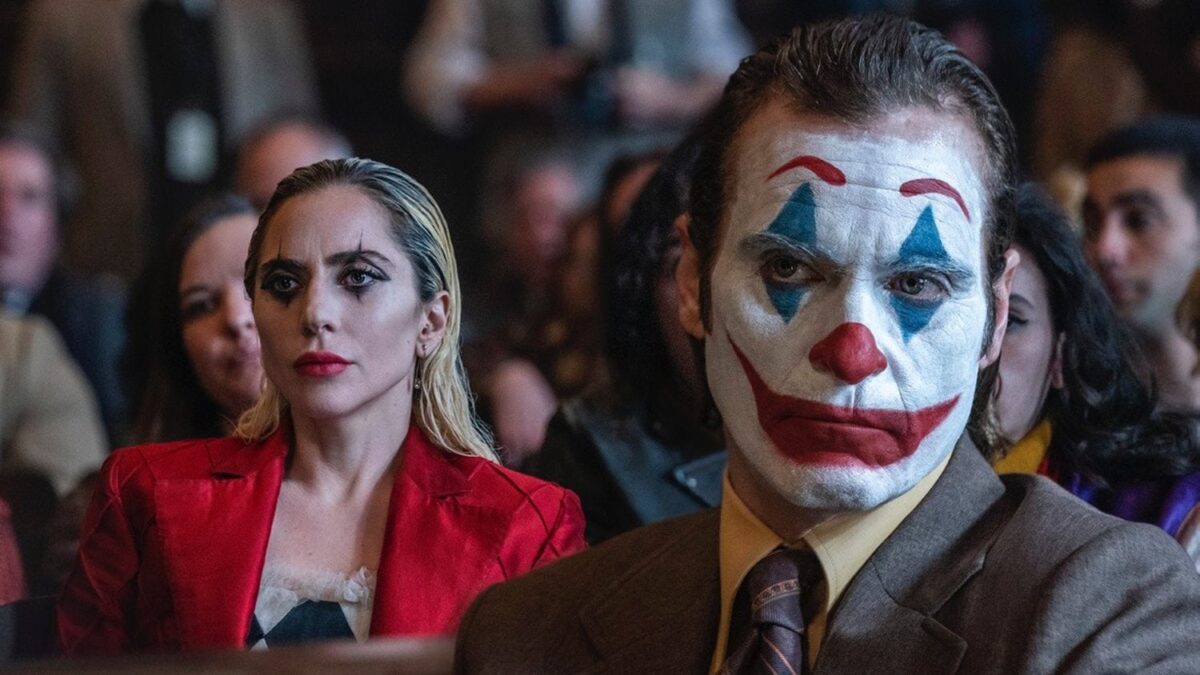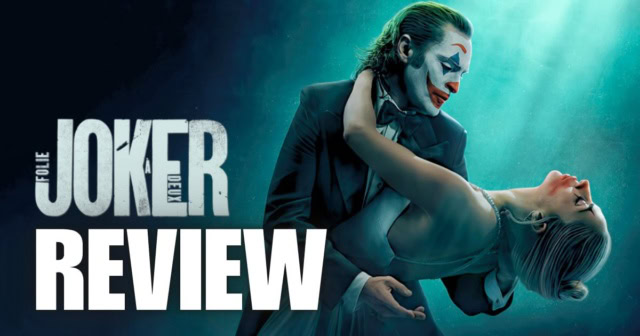‘Joker: Folie à Deux’ is a Pretty-Looking But Empty Jukebox Musical

The opening scene for Todd Phillips’ Joker: Folie à Deux signals a stark shift in tone from the 2019 Oscar and Golden Lion-winning first installment. With a Looney Tunes-inspired short directed by The Triplets of Belleville’s Sylvain Chomet, the movie posits itself as a lighter, more humorous affair than the punishing first movie. The animation is fairly creative, paying tribute to Chomet’s style and how stretching-and-squashing acted as the primary vehicle for physical and visual comedy within animation during the peak era of Looney Tunes cartoons. It looks immaculate and intrigued this critic in figuring out how Phillips will pull off the feat of a sequel to one of the most divisive movies of the last decade, especially when his previous sequels to The Hangover were not great.
[Warning: some spoilers for the first and second Joker films discussed in this review.]
Credit where credit is due: Phillips does try something different with his sequel instead of rehashing familiar beats like The Hangover – Part II. It’s way different than the first, and could be too big of a swing for most. Instead of adopting the same harsh atmosphere and story of the first, he livens up the energy through a jukebox musical involving Arthur Fleck (Joaquin Phoenix) experiencing a tangible, loving romance for the first time by way of Dr. Harleen Quinzel (Lady Gaga), a patient at Arkham State Hospital who madly falls in love with the Joker. It’s an age-old story treated in the ‘classic’ sense of the term, representing moments of euphoria through well-choreographed and shot musical numbers akin to a Vincente Minnelli or a George Cukor joint.
It’s also a courtroom drama, with the bulk of its story focused on Arthur Fleck’s trial regarding Murray Franklin’s (Robert De Niro) live assassination on his program. District Attorney Harvey Dent (Harry Lawtey) mounts the state’s case against Fleck, which quickly becomes “The Trial of the Century.” As a result, Joker: Folie à Deux thus becomes a tale of two movies: a musical romance between reinterpreted versions of Joker and Harley Quinn (they’re so far away from the comics it’s incredible, but it’s what makes Phillips’ proposition unique), and a procedural that attempts to peer into Arthur’s actions in the 2019 original, without the depth and complexity Phillips presented the last go-around.
Joker: Folie à Deux loses ambiguity
As polarizing as the original Joker was, there was much to take away from its twisted, dark tale of a man ostracized by society at every turn, slowly descending into madness, and eventually committing irredeemable acts of violence. We saw the firsthand transformation of a seemingly ordinary, broken man to a psychopath who knows full well he’s reaching a point of no return and will likely never go back to the way he was.
Whether you liked it or not didn’t much matter. Development occurred in its storytelling, themes, and an effective blur between the harshness of reality and the idealized vision of life depicted within Arthur’s mind. Phillips never handheld the audience to an obvious point; he always kept the door open that this entire story could’ve been a fabric of Arthur’s imagination and trusts the audience to infer what was real, and what was entirely fictionalized.
This is not present in Joker: Folie à Deux because we know the moments that occur in Arthur’s mind are musical numbers. The ambiguity is now gone, and the emotional texture that made Phoenix’s Oscar-winning performance so magisterial is nowhere to be found. Playing Fleck for a second time, it feels more like a contractual obligation than a deeper exploration of one of his most compelling performances in a career filled with memorable roles. Phillips and co-writer Scott Silver don’t add anything we don’t already know in Fleck’s arc and never explore his newfound sense of fame or (lack of) purpose after Joker’s events.
What does he think of the notoriety he’s achieved after killing Murray? He’s already gone to a point of no return and can’t get further than where he is now. However, there’s no push-pull between the personalities he puts forward, whether the frail, timid, but seemingly friendly Arthur and the psychotic Joker he brings up and showcases near the end of the trial, attempting to defend himself. This is what Phillips wants to focus his movie on: a study on how Joker was a fabrication of Arthur’s mind to cope with the violence and abuse he suffered as a child and society’s shunning of him throughout his life.

It’s what his lawyer, Maryanne Stewart (Catherine Keener), puts forward as a defense. However, it never gets fully explored, either through drawn-out testimonials and cross-examinations or by way of Phoenix’s introspective performance. The courtroom scenes repeat the same point over and over again with little to no interest in giving us more on Fleck’s psyche or, interestingly, exposing the titular character as a charlatan who creates a façade that he is mentally disturbed but is, in reality, of sound mind.
The central story of this sequel film is dull
The same is said for the unimpressive romance between Joker and Harley LEE Quinn (it is hilarious how much Phillips despises the comics and comic book fans as a whole). Both Phoenix and Gaga have little to no chemistry together, whether in the musical numbers, or in their more personal scenes. Their first meeting is somewhat palpable and seems rife for a profoundly imaginative reappraisal of their relationship in the comics. Unfortunately, one singular narrative decision early on in its courtroom drama removes what made their meet-cute at Arkham intriguing (they, as many said on social media, matched each other’s freak) and instead becomes another fantasy for Arthur’s head, as he experienced with Sophie Dumond (Zazie Beetz) in the first movie.
That being said, the fantasies are clearer and more pronounced in this movie than in the last. And as beautifully shot as the musical numbers are (all of them are captured in IMAX and look immaculate on the biggest of all screens), they’re also languishing and add nothing to the development of its central characters. It is only an excuse to get Phoenix and Gaga to sing and star in extravagant set pieces to justify its hefty $200 million budget. Yes, the money is absolutely on the screen, and cinematographer Lawrence Sher truly outdoes himself with a stark use of spotlights, shadows, pronounced colors, cigarette smoke, and perspective (many effective rack focuses distort the character’s viewpoints).
But none of the musical numbers seem purposeful to the development of its characters and thematic underpinnings and constantly stretch the runtime to interminable heights, as pretty as they look. It then becomes apparent that Joker: Folie à Deux is about nothing and won’t expand on any of the themes or character arcs it brilliantly established in the first installment. In any review, I avoid saying, “Nothing happens” or “a movie about nothing” because it’s intellectually dishonest and doesn’t allow us to engage with the movie on its terms. But there is no other apt descriptor for it: nothing of interest occurs, none of the characters are interestingly developed, and worse yet, the songs covered here aren’t treated in a way that celebrates their legacy, while the bulk of its courtroom drama and romance is cyclical.
Final thoughts on Joker: Folie à Deux
Joker: Folie à Deux is a true visual marvel and constantly holds your attention by looking at how Sher employs IMAX cameras for its quieter moments of character introspection and capturing its elaborate musical scenes. However, it never justifies its purpose (a recurring theme for Todd Phillips, it seems) and seemingly only exists because the first made over $1 billion, won the Golden Lion at Venice, and won two Academy Awards. Of course, Warner Bros. wanted to capitalize on its success and perhaps recreate the same reception as its polarizing first.
The 2019 film was at least about something and had an intriguing arc to observe. The sequel barely talks about anything and instead fills its runtime with aimless musical numbers and a dull courtroom drama that culminates in an impressive one until it decides to wrap up its story for good with the biggest of all thuds. It’s a swing that will likely displease many viewers, but I felt so indifferent to what came before that it truly felt like the final nail in the coffin for a sequel that should have never been in anyone’s mind after the first came out, let alone released.
Joker: Folie à Deux is now playing in theaters. What do you think of this movie? Love it? Hate it? Let us know on social media @mycosmiccircus!
Joker: Folie à Deux is a Meandering Musical That Wastes Lady Gaga



